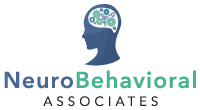Are you worried that your child may be suffering from an eating disorder? This can be scary to face as a parent, as eating disorders are often associated with various other mental health problems in tandem. Children who suffer from eating disorders often try to be discreet about their eating habits, making it hard for you as a parent to identify and monitor. In this article, we will explore how you can spot disordered eating in your child and what you can do to help.
Severe Weight Fluctuations
One of the main signs your child might be struggling with an eating disorder is if you notice their weight fluctuating. More often than not, eating disorders are associated with losing weight. However, this is not always the case! Certain eating disorders can cause those struggling to gain weight rapidly, or gain weight and lose it in an extremely short amount of time.
If your child has been gaining weight rapidly, this might be a sign of binge eating disorder.(1) When this occurs, you may notice your child overeating when unhealthy foods are present. Or, you may find wrappers and other signs of “closet eating” which may indicate that they are having binge episodes in secret.
Frequently Visiting The Bathroom After Mealtime
Have you noticed your child visiting the bathroom directly after mealtimes; or even going in frequently throughout the day? This may indicate they are struggling with binging and purging(2) episodes, where they overeat and then regurgitate the food they indulged in. You may hear water running such as a sink or shower, which can be an indicator that they are trying to hide this unhealthy behavior from you or find privacy due to the embarrassment of struggling.
Showing Panic Attack Symptoms Around Mealtime
Instead of getting excited over meals or specific visits to favorite restaurants, children struggling with eating disorders may show signs of panic around mealtime. Having to face food in front of loved ones who may notice if they are over or under eating can be extremely stressful. The pressure of having to eat foods and feeling out of control may cause panic attack symptoms to occur. Panic attack symptoms(3) to look out for include sweating, fast breathing, trembling, or complaints of stomach pain.
Changes In Food Preferences
If your child has recently changed a large portion of their food preferences, this may be cause for concern. This is especially true if they are swapping normally enjoyed treats with seemingly “healthier” options, or skipping these indulgences altogether. If you make your child their favorite meal only to see they are playing with their food during dinner, you may want to be on the lookout for other warning signs. If this behavior continues, it is time to see a professional and get your child help and support.
We hope this article allows you to better understand the warning signs when identifying disordered eating in your child. For more helpful resources and support, contact NeuroBehavioral Associates today!
References:
- Binge Eating Disorder – Symptoms and Causes – Mayo Clinic
- Understanding Binging and Purging – Very Well Mind
- Panic Disorder: When Fear Overwhelms – National Institute of Mental Health






